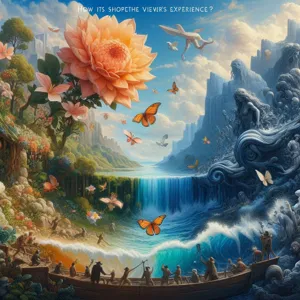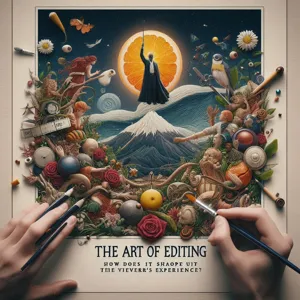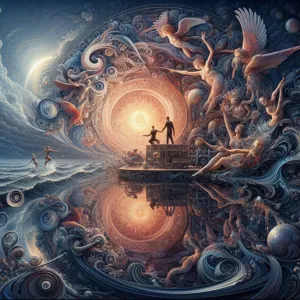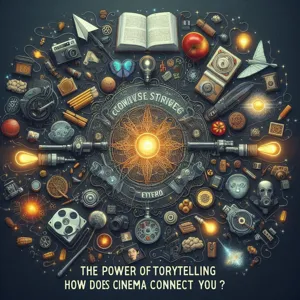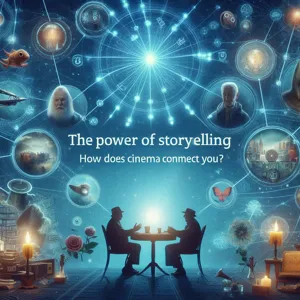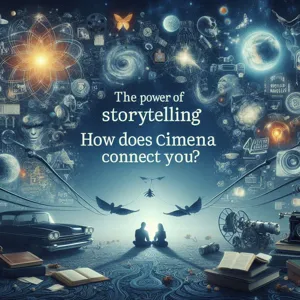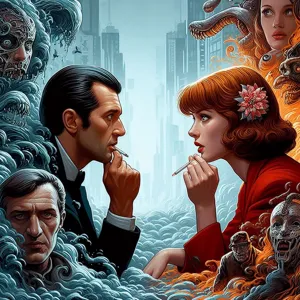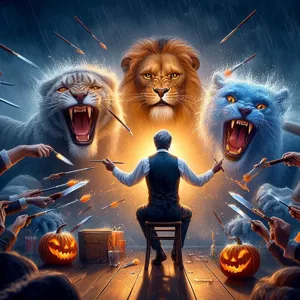Love has a way of weaving its magic, often bringing us to the brink of tears and laughter in equal measure.
It’s an exhilarating journey filled with passion, heartache, and the sheer joy of connection, often leaving us breathless and longing for more. In this heartfelt blog post, we delve into a collection of the most romantic love stories that have captured hearts through the ages, showcasing the beautiful tapestry of human emotion. From timeless classics that have stood the test of time to contemporary tales that resonate with modern sensibilities, these narratives remind us of love’s profound ability to uplift and transform. Whether it’s the heartwarming moments that make us smile or the poignant experiences that evoke deep reflection, these stories are sure to touch your heart and rekindle your belief in the magic of love. Join us as we explore the enchanting world of romance that promises to inspire, uplift, and perhaps even bring a tear to your eye.
1. Introduction: The Power of Love Stories

Love stories have an unparalleled ability to resonate with the human spirit, weaving a tapestry of emotions that can evoke both tears and laughter. They capture the intricate dance between joy and sorrow, illustrating the multifaceted nature of love in its purest form. From the passionate embrace of new romance to the bittersweet pangs of longing, these narratives remind us of the profound connections we share with one another.
In literature, film, and even in our everyday lives, love stories transport us to a world where the heart reigns supreme. They inspire us to dream, to hope, and to believe in the magic of love. Whether it’s the tale of a couple overcoming insurmountable odds to be together or the unexpected reunion of long-lost lovers, each story is a testament to love’s resilience and transformative power.
As we dive into the realm of romantic love stories, we find ourselves reflecting on our own experiences—those heart-fluttering moments that make us feel alive, along with the inevitable heartaches that teach us valuable lessons. Through laughter and tears, these stories not only entertain us but also remind us of the beauty and complexity of human relationships. So, grab a cozy blanket, perhaps a box of tissues, and prepare to journey through some of the most touching narratives that celebrate love in all its forms.
2. The Elements of a Great Romantic Love Story
When it comes to crafting a romantic love story that resonates deeply with readers, certain elements are essential for capturing the essence of love in all its complexities. A great romantic love story is more than just a whirlwind of passion; it intertwines a captivating plot, well-developed characters, emotional stakes, and an authentic setting that enhances the narrative.
**Compelling Characters**: At the heart of every memorable love story are the characters—vivid, relatable individuals whose journeys we invest in emotionally. Readers should feel a connection to the protagonists, whether through their struggles, aspirations, or vulnerabilities. A well-written love story often features characters who are flawed yet endearing, allowing the audience to experience their growth and transformation as they navigate the rollercoaster of love.
**Conflict and Tension**: Every great romance thrives on conflict. Without obstacles, the story risks becoming mundane. The tension could stem from outside forces—such as societal expectations, family disapproval, or distance—or from internal struggles, like fear of commitment or past traumas. This tension keeps readers on the edge of their seats, rooting for the characters to overcome their challenges and find their way back to each other.
**Emotional Resonance**: A successful love story elicits a range of emotions, from heartwarming joy to gut-wrenching sadness. It creates moments that tug at the heartstrings—first meetings full of spark, passionate declarations of love, and bittersweet goodbyes. These moments allow readers to relive their own experiences of love and loss, making the story all the more impactful.
**A Memorable Setting**: The backdrop against which the love story unfolds plays a pivotal role in shaping the narrative. Whether it’s a bustling city, a quaint small town, or a picturesque beach, the setting can amplify the emotions and themes of the story. A well-crafted environment can enhance the romantic tension and provide opportunities for unique experiences that draw the characters closer together.
**A Satisfying Resolution**: Finally, a great love story culminates in a resolution that feels authentic and fulfilling. Whether it leads to a happily-ever-after or a poignant bittersweet ending, the conclusion should resonate with the journey the characters have undertaken. Readers should feel a sense of closure, even if it comes with tears, as they reflect on the beauty and complexity of love.
Incorporating these elements into your romantic love story can help you create a narrative that not only entertains but also touches the hearts of your readers, leaving them with lasting memories of love’s power and its ability to transform lives.
3. Classic Love Stories That Stand the Test of Time
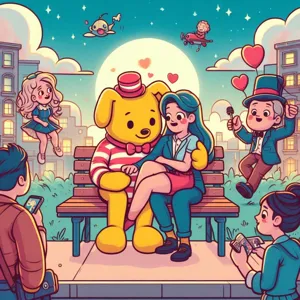
When it comes to the realm of romance, certain tales have transcended generations, etching their way into the hearts of readers and moviegoers alike. These classic love stories, woven with the threads of passion, heartbreak, and enduring devotion, continue to resonate with audiences, reminding us of the timeless nature of love.
Take, for example, the poignant saga of Elizabeth Bennet and Mr. Darcy in Jane Austen’s *Pride and Prejudice*. Their relationship is a dance of misunderstandings and societal pressures, yet through wit and resilience, they ultimately find a deeper connection that defies the confines of their world. Austen’s sharp commentary on class and character invites readers to reflect on their own relationships and the importance of looking beyond first impressions.
Then there’s the fateful romance of Romeo and Juliet, penned by the master of tragedy, William Shakespeare. This tale of star-crossed lovers encapsulates the intensity of young love and the devastating consequences of feuding families. Their story serves as a powerful reminder of love’s ability to transcend tragedy, igniting both tears and admiration as we witness the lengths to which they will go for one another.
In more contemporary literature, *The Notebook* by Nicholas Sparks captures the essence of enduring love through the lives of Noah and Allie, whose bond withstands the trials of time, memory, and circumstance. Their story, filled with tender moments and heart-wrenching separations, resonates deeply with anyone who has experienced the complexities of love, reminding us that true love can weather any storm.
These classic love stories not only stand the test of time but also evoke a spectrum of emotions, from laughter to tears. They remind us that love, in all its forms, is a powerful force that binds us together across ages and cultures. So, whether you’re revisiting these beloved tales or discovering them for the first time, prepare to be moved by the timeless dance of romance that continues to inspire countless hearts.
4. Modern Love Stories That Capture Our Hearts
In today’s fast-paced world, where connections can often feel fleeting, modern love stories have a unique ability to resonate deeply with our emotions. These tales, woven through the threads of technology and contemporary life, capture the essence of romance in a way that feels both relatable and heartwarming.
Take, for instance, the story of two strangers who met through a dating app, both nursing their own heartbreaks. As they navigated the complexities of modern dating, their journey blossomed into a profound relationship that challenged their perceptions of love and vulnerability. Their late-night video calls, shared playlists, and spontaneous weekend getaways transformed their initial connection into a lasting bond, reminding us that love often finds us when we least expect it.
Another captivating narrative emerges from the hustle and bustle of city life, where a busy career woman finds solace in a small coffee shop. There, she encounters a charming barista with a passion for poetry. Their daily exchanges evolve into deeper conversations, and soon, they are sharing their dreams and fears over steaming cups of coffee. This story beautifully illustrates how love can flourish in the most unexpected places, rejuvenating our spirits amidst the chaos of everyday life.
Modern love stories also embrace the challenges of long-distance relationships, showcasing couples who bravely face time zones, missed flights, and the yearning that comes from being apart. Their commitment shines through as they send handwritten letters, create countdown calendars, and make the most of the moments they share, whether it’s through video chats or cherished visits. These narratives remind us that love knows no boundaries and can thrive even when miles separate us.
These contemporary tales of romance are not just about grand gestures; they highlight the simple yet profound moments that define love today—text messages that brighten a gloomy day, shared memes that spark laughter, and the comfort of simply knowing someone is there for you. In a world that often feels chaotic, these modern love stories capture the heart’s enduring capacity to connect, heal, and bring joy, reminding us all that love is still alive and well, waiting to be discovered in the most unexpected ways.
5. Love Stories from Around the World

Love knows no boundaries, and around the globe, cultures weave their own unique tales of romance that resonate with the deepest emotions of the human experience. In the bustling streets of Paris, two souls might find each other in a quaint café, where the aroma of freshly brewed coffee mingles with the sweet melodies of street musicians. Their connection transcends language, as they share stolen glances and whispered secrets, embodying the quintessential essence of French romance.
Travel to the vibrant markets of Marrakech, where a young couple’s love blossoms amidst the colorful chaos. As they navigate through the maze of stalls, their laughter rings out, mingling with the sounds of merchants and musicians. Here, love is a dance, celebrated through shared spices and the warmth of the desert sun, reminding us that romance can flourish even in the most unexpected places.
In the serene landscapes of Japan, cherry blossoms bloom, symbolizing the fleeting nature of love. A love story here may unfold in the quiet moments of hanami, where couples gather under the delicate pink petals, savoring sushi and sake while reflecting on the beauty of life and love. The gentle rustle of the blossoms serves as a poignant reminder that love, like the seasons, is both beautiful and ephemeral.
From the passionate tango of Buenos Aires to the traditional love tales of India, where arranged marriages often blossom into deep affection, each culture offers a rich tapestry of romantic narratives. These stories remind us that love, in its myriad forms, is a universal language that connects us all, transcending time, space, and cultural differences. As we explore these love stories from around the world, we discover that while the details may differ, the emotions behind them remain strikingly similar—joy, heartache, passion, and an unwavering hope that love will endure.
6. The Role of Tears in Romantic Narratives
Tears are often seen as symbols of vulnerability and depth in romantic narratives, adding layers of complexity to love stories that resonate with readers on a profound emotional level. They serve as a powerful reminder that love is not just about joyous moments; it encompasses heartache, longing, and the bittersweet reality of human connection. In literature and film alike, tears can signal the culmination of a pivotal moment—be it a passionate reunion or a heartbreaking farewell—drawing us into the characters’ experiences and inviting us to share in their emotional journey.
Consider the classic tales where love is tested by adversity. Tears may fall during a passionate confession, where the weight of unspoken words is finally released, or during a moment of separation, where the ache of love lost is palpable. These instances not only deepen the narrative but also forge a bond between the characters and the audience. We empathize with their struggles, feeling every pang of sorrow and every flicker of hope as if they were our own.
Moreover, tears in romantic narratives often serve as a catalyst for growth and transformation. They can signify the shedding of old fears, paving the way for newfound love or deeper understanding. In stories where characters face their vulnerabilities, tears can lead to moments of clarity and connection, highlighting the resilience of love even in the face of despair.
Ultimately, the role of tears in romantic narratives is to remind us that love is a complex tapestry woven with both joy and sorrow. It’s in those moments of emotional release that we find the most authentic expressions of love, making the stories all the more relatable and touching. As readers and viewers, we are reminded that every love story has its ups and downs, and it is through both laughter and tears that we come to understand the true essence of love.
7. Moments of Laughter: Finding Joy in Love
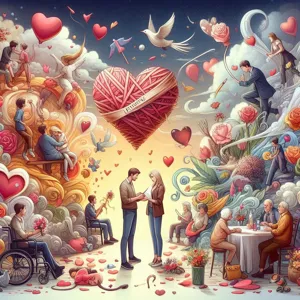
In the intricate tapestry of love stories, moments of laughter weave a vibrant thread that binds hearts together. It’s in those light-hearted exchanges, playful teasing, and shared inside jokes that couples find solace and joy, even amidst life’s storms. Laughter serves as a powerful balm, transforming mundane moments into cherished memories.
Think of the couple who, on a rainy day, decides to have an impromptu dance party in their living room. As they twirl and spin, the sound of their laughter fills the air, echoing off the walls like a sweet symphony. It’s in these spontaneous bursts of joy that love finds its rhythm, encouraging both partners to let go of their worries and embrace the beauty of the present moment.
Consider the classic love story where disagreements arise but are quickly diffused by a well-timed joke or playful banter. These moments not only lighten the mood but also reinforce the emotional connection between partners. They remind us that love is not just about grand gestures and romantic dinners; it’s also about the shared laughter that fuels intimacy and understanding.
Even in the most trying times, laughter can be a beacon of hope. Picture a couple facing life’s challenges, yet they find humor in their situation—a shared chuckle over a burnt dinner or a clumsy mishap during a home renovation. These lighthearted moments create a reservoir of resilience, allowing love to thrive despite adversity.
In your own love story, seek out those moments of laughter. They are the delightful surprises that keep your relationship fresh, vibrant, and full of life. Whether it’s through silly nicknames, playful texts, or reminiscing about the past, infusing your relationship with humor can help you navigate the highs and lows of love with grace and joy. After all, when laughter fills your relationship, it becomes a sanctuary where love flourishes and hearts intertwine.
8. Unconventional Love Stories That Inspire
In a world where love often follows traditional narratives, unconventional love stories break the mold and remind us that romance can flourish in the most unexpected circumstances. These tales, rich with unique challenges and heartfelt triumphs, inspire us to embrace love in all its forms, defying societal norms and expectations.
Consider the story of an artist and a scientist, two individuals from vastly different worlds who found common ground in their passion for creativity and exploration. Their love blossomed amid late-night debates about the universe and the intricacies of the human experience. Despite their differing approaches to life—one grounded in empirical evidence, the other in vivid imagination—they discovered that their contrasting perspectives only deepened their connection. This narrative not only highlights their love but also illustrates the beauty that arises when two people dare to embrace their differences.
Then there’s the poignant tale of a love that spans decades, yet remains unfulfilled due to circumstances beyond the couple’s control. After meeting as teenagers in a small town, their lives took them on separate paths, filled with marriages, careers, and children. Yet, through the years, they kept in touch, each nurturing a flicker of hope that one day they might reunite. This story reminds us that true love can withstand the test of time and distance, often waiting patiently for the right moment to bloom anew.
Unconventional love stories also extend to tales of friendship turning into romance in the most surprising ways. Imagine two best friends who have shared laughter and tears, supporting one another through life’s ups and downs. As their lives evolve, they begin to see each other in a new light, realizing that the love they’ve been nurturing all along is the very foundation of a deeper relationship. Their journey teaches us that sometimes the most profound connections grow from the seeds of friendship.
These inspiring narratives remind us that love knows no boundaries, whether they be societal, geographical, or even temporal. They encourage us to look beyond the conventional and to celebrate the extraordinary ways in which love can manifest, urging us to believe that our own love stories—no matter how unconventional—are just as valid and beautiful. After all, every love story has the power to touch our hearts, ignite our imaginations, and inspire us to seek out the love we truly deserve.
9. Love Stories That Overcame Adversity
Love has a remarkable way of blossoming, even in the face of adversity. The most poignant love stories often emerge from the challenges that life throws our way, weaving narratives that are rich with emotion, resilience, and unwavering devotion. These tales not only tug at our heartstrings but also inspire us to believe in the power of love against all odds.
Take, for instance, the timeless story of Elizabeth and Mr. Darcy from Jane Austen’s “Pride and Prejudice.” Their relationship navigates the treacherous waters of social class differences and personal misunderstandings, yet emerges stronger for it. Their journey from prejudice to understanding serves as a beautiful reminder that love can triumph over societal expectations, leading to a profound connection that defies convention.
In more contemporary narratives, we find stories like that of Hazel and Gus from John Green’s “The Fault in Our Stars.” Both battling terminal illnesses, their love story unfolds amidst the shadows of pain and uncertainty. Yet, in their shared experiences, they discover a depth of affection and joy that transcends their circumstances. Their ability to find laughter and beauty in fleeting moments showcases how love can provide solace, even when faced with life’s most daunting challenges.
Then there’s the extraordinary real-life tale of Paul and Maddy, who met during their treatment for cancer. Their romance blossomed in the hospital, where each day presented new challenges. Despite the harsh realities of their illness, they found strength in one another, proving that love can flourish even in the most difficult times. Their story emphasizes the importance of companionship and support, reminding us that love is often the greatest healer.
These stories, whether fictional or real, serve as a testament to the enduring nature of love. They remind us that while adversity may test the bonds we share, it can also deepen our connections and illuminate the true essence of partnership. In the end, love stories that overcome adversity teach us that while the path may be fraught with obstacles, the journey is ultimately worth it when two hearts unite against the world.
10. The Impact of Love Stories in Literature and Film
The impact of love stories in literature and film is profound, transcending time and culture to resonate deeply within the human experience. These narratives, whether penned in the pages of a classic novel or brought to life on the silver screen, serve as mirrors reflecting our own desires, fears, and hopes. They captivate our hearts, inviting us into a world where love triumphs over adversity, where passion ignites, and where the bonds of connection are forged in the crucible of life’s trials.
In literature, the eloquent words of writers like Jane Austen and Leo Tolstoy have woven intricate tales of romance that continue to echo through generations. Their stories explore the complexities of love, often set against the backdrop of societal norms and personal struggles. Austen’s playful wit and keen observations on social class in *Pride and Prejudice* remind us that love can be found in the most unexpected places, while Tolstoy’s *Anna Karenina* delves into the darker aspects of passion, revealing the sacrifices that often accompany true love. Each tale carries with it a lesson, a reflection of the multifaceted nature of human relationships.
Similarly, film has the unique ability to evoke emotions through visual storytelling, marrying stunning cinematography with powerful performances. Iconic films like *Casablanca* and *The Notebook* have become cultural touchstones, showcasing love’s ability to endure through time and loss. The palpable chemistry between characters can make viewers laugh, cry, and yearn for their own romantic connections. These films not only entertain but also inspire audiences to contemplate their relationships and the depth of their own feelings.
The magic of love stories lies in their ability to unite us, transcending barriers of language and culture. They remind us of our shared humanity, illustrating that, despite our differences, the longing for love is a universal truth. Whether through a heartwarming book or a tear-jerking movie, love stories continue to touch our hearts, leaving an indelible mark on our lives and encouraging us to embrace the beauty of love in all its forms. Ultimately, they serve as a testament to the power of storytelling, inviting us to dream, to hope, and to believe in the magic of love.
11. Personal Love Stories: Real-Life Tales of Romance
In a world often filled with fictional narratives and scripted moments, real-life love stories have an undeniable power to resonate deeply within us. These personal accounts are raw, unfiltered glimpses into the complexities of romance, showcasing the triumphs and tribulations that come with love. They remind us that while romance can spark from the pages of a novel or the scenes of a film, the most profound stories often unfold in our everyday lives.
Consider the couple who met by chance at a coffee shop, their shared love for a particular brew igniting a conversation that would lead to years of laughter and adventure. Or the pair who reconnected years after a brief encounter in high school, discovering that the feelings they once shared had only deepened with time. Each story is unique, filled with serendipitous moments, heartfelt gestures, and the kind of vulnerability that comes with opening one’s heart to another.
These narratives are often interwoven with challenges that test the strength of the relationship. From long-distance separations that strain communication to health crises that shake the foundation of their bond, the resilience shown by these couples is inspiring. They teach us that love isn’t just about blissful moments; it’s about standing by one another through life’s unpredictability, navigating storms together, and emerging stronger on the other side.
What makes these stories particularly touching is the authenticity they carry. They aren’t glossed over or idealized; instead, they reflect the beautiful messiness of real-life relationships. Each laugh, tear, and quiet moment of understanding paints a vivid picture of love in its truest form. Whether it’s the elderly couple who still holds hands during their evening walks or the newlyweds who tackle their first home renovation with humor and patience, these tales of romance ignite hope and remind us that love, in all its forms, is a journey worth taking.
As you dive into these personal love stories, prepare to be moved, to smile, and perhaps even shed a tear. Each narrative is a testament to the enduring power of love, proving that sometimes, the most beautiful tales of romance are the ones that happen just outside our own front doors.
12. How Love Stories Shape Our Understanding of Relationships
Love stories have an unparalleled ability to shape our understanding of relationships, weaving intricate narratives that reflect the complexities of human emotions. From the tender beginnings of infatuation to the heart-wrenching moments of loss, these stories offer us a mirror through which we can explore our own experiences and feelings. They teach us about vulnerability, sacrifice, and the transformative power of love.
Whether it’s the passionate encounters of classic literary couples or the modern-day romances portrayed in films and novels, each tale provides insights into the struggles and triumphs that accompany love. Through the eyes of characters navigating the rollercoaster of romance, we learn valuable lessons about communication, trust, and commitment. We see how love can inspire us to be better versions of ourselves and how it can also challenge us to confront our fears and insecurities.
Moreover, love stories often highlight the cultural and societal influences that shape our relationships. They reflect the norms and values of their time, allowing us to examine how love is expressed across different contexts and communities. This exploration fosters empathy, as we recognize that while our circumstances may differ, the emotions we feel are universally relatable.
Ultimately, love stories serve as both a source of entertainment and a profound educational tool. They encourage us to reflect on our own relationships, to understand the depth of our connections with others, and to appreciate the beauty of vulnerability. As we immerse ourselves in these narratives, we not only find solace in shared experiences but also gain a deeper understanding of what it truly means to love and be loved.
13. Lessons Learned from Romantic Love Stories
Romantic love stories have an extraordinary power to evoke deep emotions, often leaving us teetering on the brink of tears one moment and bursting into laughter the next. Beyond the captivating plots and enchanting characters, these tales impart invaluable lessons about love, resilience, and the human experience.
From timeless classics like “Pride and Prejudice” to modern hits such as “The Notebook,” these narratives remind us that love is rarely straightforward. They teach us that it often requires patience, understanding, and the willingness to embrace vulnerability. One of the most profound lessons is that love can flourish in the most unexpected of circumstances—whether it’s a chance encounter on a rainy day or a rekindled connection after years apart.
Moreover, romantic love stories underscore the importance of communication and compromise. Characters often navigate misunderstandings, showcasing how open dialogue and empathy can mend even the most fractured relationships. They also remind us that love is not merely about grand gestures but also about the small, everyday moments that solidify bonds—sharing a laugh over a silly joke, or the comfort of a hand held during difficult times.
Equally, these narratives teach us about the power of forgiveness. Characters often face betrayals or miscommunications, yet they find their way back to each other, illustrating that love can endure through adversity and that healing is possible when both parties are willing to put in the effort.
As we dive into the enchanting world of love stories, we are reminded that each tale, whether tragic or triumphant, serves as a mirror reflecting our own experiences and aspirations. They inspire us to believe in the magic of love and to cherish the connections that enrich our lives. After all, in the grand tapestry of life, it’s the lessons learned from these romantic journeys that ultimately shape our understanding of love and relationships.
14. Conclusion: The Enduring Nature of Love in Storytelling
As we draw the curtain on our exploration of the most romantic love stories, it becomes clear that love, in all its complexities, remains a timeless and universal theme in storytelling. These narratives—woven through the fabric of various cultures and epochs—remind us of love’s enduring power to inspire, heal, and transform.
From the heart-wrenching tales of sacrifice and longing to the joyous celebrations of union and companionship, each story captures a different facet of love’s multifaceted nature. Whether it’s the passionate embrace of star-crossed lovers or the quiet strength found in lifelong partnerships, these narratives resonate deeply within us, eliciting tears of empathy and laughter from shared joy.
Storytelling, in its essence, is a reflection of the human experience, and love is its most potent catalyst. It sparks our imagination and evokes our emotions, allowing us to connect with characters and their journeys on a profound level. Moreover, these stories serve as a reminder of our own experiences with love—each heartache and triumph, every laugh and tear, stitching together the rich tapestry of our lives.
As we close this chapter, let us carry forward the lessons of these love stories—embracing vulnerability, cherishing connections, and celebrating the beauty of love in all its forms. No matter where we find ourselves in our own romantic journeys, may we always find solace in the knowledge that love, in its myriad expressions, is a force that binds us all. In the end, it is these stories—filled with both tears and laughter—that continue to touch our hearts and remind us of the magic that love brings to every narrative.
15. Recommended Reading and Viewing for Love Story Enthusiasts
For those who find joy in the ebb and flow of romance, there’s nothing quite like diving into a captivating love story, whether in the pages of a novel or on the silver screen. Here’s a curated selection of recommended reading and viewing that promises to stir your emotions, spark your imagination, and leave you reflecting on the beauty of love long after you’ve turned the last page or rolled the credits.
**Books:**
1. **”The Notebook” by Nicholas Sparks** – This iconic tale of enduring love transcends time, chronicling the passionate romance between Noah and Allie, whose bond remains unbreakable despite the trials of life. Prepare for tears as you witness their journey through heartache and joy.
2. **”Pride and Prejudice” by Jane Austen** – A classic that defies time, Austen’s sharp wit and keen observations of society intertwine to create a delightful narrative of love, misunderstandings, and eventual union between Elizabeth Bennet and Mr. Darcy.
3. **”Me Before You” by Jojo Moyes** – This contemporary novel tells the poignant story of Louisa Clark and Will Traynor, delving into themes of love, loss, and the importance of living life to the fullest. It’s a heart-wrenching ride that will challenge your perceptions of love and sacrifice.
**Films:**
1. **”Eternal Sunshine of the Spotless Mind”** – This unconventional love story combines science fiction and romance as it explores the complexities of relationships and the bittersweet nature of memory. The artistic storytelling and stunning visuals will leave you contemplating the essence of love.
2. **”A Walk to Remember”** – Another gem from Nicholas Sparks, this film adaptation beautifully captures the transformative power of love through the unlikely relationship between a rebellious teenager and a quiet pastor’s daughter. Expect both tears and laughter as their love story unfolds.
3. **”La La Land”** – A modern musical that celebrates love and dreams in the backdrop of Los Angeles, this vibrant film contrasts romance with ambition, leaving viewers both enchanted and heartbroken by its enchanting cinematography and memorable soundtrack.
Whether through the pages of a novel or the frames of a film, these stories are bound to resonate with anyone who has ever experienced the highs and lows of love. So, grab a cozy blanket, settle into your favorite reading nook, or prepare your popcorn, and get ready to embark on an emotional journey that will touch your heart and soul.
As we draw the curtain on our exploration of the most romantic love stories that evoke both tears and laughter, we hope you feel inspired to embrace the profound beauty of love in all its complexities. Each tale we’ve shared serves as a poignant reminder that love is not just about grand gestures or happy endings, but also about vulnerability, resilience, and the shared moments that shape our connections. Whether you find yourself laughing at the whimsical twists of fate or shedding a tear over heartfelt sacrifices, these stories resonate with the universal truth that love, in all its forms, enriches our lives in immeasurable ways. So, as you close this chapter, we encourage you to reflect on your own love story and cherish the moments that make your heart flutter. Thank you for joining us on this journey through the realms of romance—may your own love stories continue to unfold with joy and depth.


